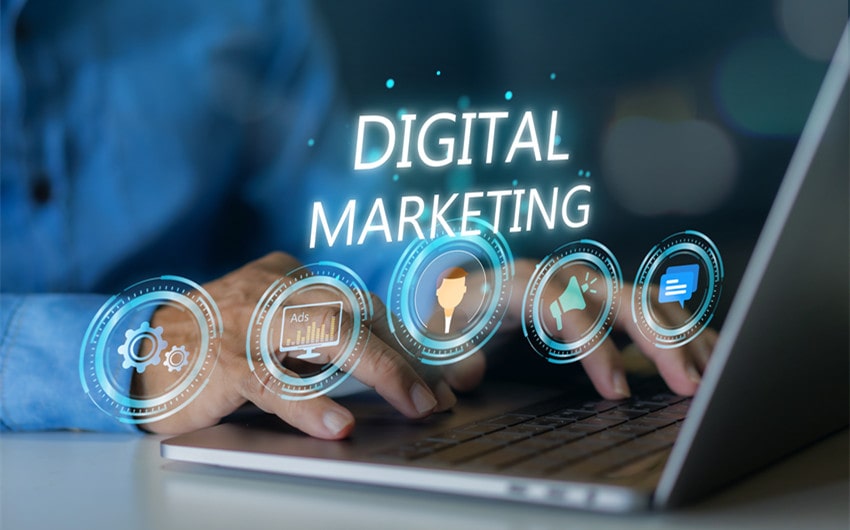Revamp Your Marketing: Critical Skills for Small Business Owners
As the owner of a small business, there’s a good chance you are doing some — if not all — of your own marketing. In one sense, this can be a lot of fun. You are responsible for putting together a brand image that represents your ventures. On the other, you may struggle to make an impact on the market with your efforts alone.
Rather than pushing marketing to the bottom of your “to-do” pile, consider reinvesting in yourself to learn cutting-edge marketing skills. This can help you expand your reach and retain more of your customers. Making efforts to properly market yourself can help you learn more about the industry, too, as marketing is often at the forefront of trends in your area of business.
Revamping your marketing skills can also improve your ROI on upcoming product launches and expansion plans, too. Put simply, folks are far more likely to buy your product or service when it is properly marketed, and modern marketing techniques like social media incur minimal costs for your company.
Market Research
The way you research your market has changed dramatically in recent years. You no longer need to drive to competitors’ stores to find out what they’re stocking, and shouldn’t have to stand on street corners hoping to interview prospective customers about their preferences.
Instead, invest in improving your digital market research skills to better understand trends, pressures, and the preferences that your consumers have. This is key, as well-conducted market research will give future strategies and campaigns their direction. When conducting research, consider techniques like:
- Market segmentation;
- Pricing research;
- Interviews and focus groups;
- Competitive analysis;
- Campaign research.
You can use a range of primary and secondary research to deepen your understanding and improve the accuracy of your findings. For example, if you’d like to better understand your customers, you should consider segmenting them based on demographics like age and location. Once you’ve done this, you can use secondary research, like census data or market reports, to better understand the needs and preferences of customers from those respective regions or age brackets.
You can also use these findings to alter the content of your campaigns and start building an SEO strategy that draws more people to your business. This can kick-start a period of growth for your firm and help you reach more people as your company grows.
SEO Marketing
Search Engine Optimization is crucial in today’s digital age. Without a clear SEO strategy, you’ll never rank highly on Google and will struggle to gain the attention of prospective customers. Investing in SEO is particularly important if you have an e-Commerce site, as you’ll need to drive traffic if you want to increase sales volume and turn a profit. You can help your business land on the first page of Google by:
• Conducting Keyword Research: Identify the words your customers are most likely to use when searching for your product or service. You can do much of this through Google Adwords for free.
• Utilize Keyword Insights: Once you’ve established a few primary keywords, revise your site structure to ensure that category and product pages include your keywords.
• Create Content: Create keyword-optimized content that is valuable for readers and keeps them on your site for longer. Be sure to use features like headings and title tags, and include keywords in any alt-text you provide alongside pictures.
When writing content for your blog, avoid the temptation to “keyword stuff”. Today’s crawlers will punish blogs that unnecessarily force keywords into content, as this generally undermines the reading experience. Instead, focus your efforts on producing the best content possible. For example, if you run a shop dedicated to selling knitted wear, consider creating blog posts that explain how to cross-stitch and slip-stitch. This type of content is useful for readers and will drive more traffic towards your site.
Local SEO
Local SEO is a must if you sell to folks within your own town or city. Foregrounding local SEO can meaningfully increase your sales if you have a brick-and-mortar presence and offer a product or service like food, haircuts, retail shopping, or auto repair. For a home service company digital marketing strategy, effective local SEO ensures that when folks search for “service X near me”, your establishment will rank amongst the highest hits. When trying to get ahead of the competition, focus on the basics of local SEO, including:
• Conduct local keyword research to figure out the search terms that are most relevant to folks in your area
• Research your competitors to see what terms they’re ranking for. This will streamline your research and help you avoid highly competitive terms that may not boost your brand presence in the area.
• Revise your Google Business Profile to ensure that you’re properly registered as a local business in the area.
• Focus on getting local citations (or links) on relevant sites like travel agencies
You can also boost your local profile by gathering local reviews. For example, if you run a physical establishment like a coffee shop, consider offering perks like a free drink for folks who review your site on Google or Facebook. This will help you rise through the rankings quickly and establish your authority as a legitimate vendor in the area.
Content Creation Principles
Creating content for your social pages, blog, or promotions can be intimidating if you’re new to marketing. Finding new ideas for your website can be frustrating, too, as you’re likely to feel as though you’ve exhausted all your topics quickly if you run a small business and only offer a limited range of products and services.
Deepening your understanding of content creation can help you come up with new ideas and overcome writer’s block. A clear focus on the best guidelines for crafting compelling content can help you create articles and social posts that drive sales and boost brand loyalty, too. If you’re entirely new to the idea of content creation, start by mastering the basics, like:
• Consider Your Audience: What does your audience enjoy consuming? Which audience personas are you attempting to appeal to? What might your audience want to know about your business?
• Research a Topic: What have your competitors already covered, and how can you put a unique spin on existing articles or social posts? Which sources will you lean on to back up your claims? Will you connect with experts in your field for interview opportunities?
• Create a Story: What brand story do you want to convey with your messaging? Is there a central idea or theme you want to highlight? Or a certain emotion you want to bring to the fore? Answering these questions can help you create a brand story that resonates with your readers.
• Visuals: Inserting visual content like images, graphics, and videos keeps folks on the page for longer. By leveraging a free video editor, you can easily create captivating videos that enhance engagement. This approach can also drive more traffic to pages like your YouTube channel or your social media pages.
• Structure: Readers are turned off by walls of text. Instead, break your content up with plenty of bullet points, subheaders, and break-out quotes to recapture the reader’s attention.
Following these steps will give you a framework for success and help you get more from your posts and blog ideas. You can usually recycle well-made articles and blog pieces into social posts, too, meaning you spend less time brainstorming and more time creating content that positively impacts your bottom line.
Social Media Mastery
As a business owner, it’s easy to overlook social media. After all, it takes a long time to build a following, and you may find that most of your posts get little to no engagement in the first year or so of your operations. However, properly leveraging social media is more than creating graphics for your Instagram page.
Rather than trying to master all three big business platforms at once (Facebook, Instagram, and LinkedIn), focus your efforts on a single channel to learn more about how that social media platform works. For example, if you run an event-based craft store, consider going all-in on Facebook to boost your visibility. You can do this by:
- Creating a Facebook Business page;
- Use page insights to track traffic;
- Boost posts using Facebook Ads;
- Create engaging content and replicate posts that receive the most likes, comments, or shares.
Proactively managing your social media presence can help you stay ahead of negativity on social media, too. If you do notice that folks are complaining about your product or responding to posts with negative reviews, take action by:
- Responding courteously as quickly as possible;
- Asking to take the conversation to a private forum (e.g. a DM or email);
- Listen to consumers and try to understand things from their perspective;
- Offer a solution that adds value to your consumer’s life and repairs the relationship.
When crafting responses to bad press, always be courteous and take a professional tone. Even if consumers are confused or in the wrong, you can’t afford to undermine your own image by engaging in name-calling or sniping. Instead, try to get to the bottom of the complaint and offer folks who have legitimate grievances things like freebies or refunds.
It’s important to know when not to respond, too. You shouldn’t engage with troll-like posts that use derogatory language and should simply ban users who post harmful content to your social media pages. You may find that some consumers are actually in the wrong, or are seeking to undermine your brand for their own nefarious reasons. If this happens, retain a professional tone and rise above it when crafting a response.
Email Marketing
Adding folks to your email list is a great way to re-engage existing customers and boost the ROI of your content marketing campaigns. For example, if you’ve recently typed up a blog post about an upcoming product, you can send this in a newsletter-style email to existing customers who have subscribed to your business. However, email marketing can be tricky if you’re new to the world of content creation and digital marketing.
Rather than peppering your customers with spam-like content, take some time to learn more about email marketing. Email marketing is a complex marketing tool that requires an understanding of things like:
- Responsive HTML;
- Google Analytics;
- UX design;
- Data privacy and protection.
Understanding these basic principles of email marketing will save you time and help you dodge fines based on privacy laws like GDPR. This is crucial, as email marketing can have a very high ROI when compared to other digital marketing tactics. You should also consider getting up to speed with platforms like MailChimp and HubSpot, as these services can help you track the effectiveness of your email campaigns and avoid falling into the traps that explain why email marketing fails for so many businesses.
Paid Digital Advertising
Paid advertising can give your marketing campaigns a much-needed injection of energy and momentum. While we all want our organic posts to reach large audiences, sometimes spending a little extra on sponsored posts and pay-per-click (PPC) ads can drive traffic and boost your bottom line. The benefits of techniques like PPC include:
- Increased visibility and exposure;
- Improved ability to target specific audiences;
- Ability to measure results more effectively;
- Works in tandem with other campaigns you’re running.
However, before you commit to PPC, consider whether or not you have an adequate budget for paid marketing and if you can commit to managing the campaign. Techniques like PPC require regular oversight and take time to yield profitable results. This means you need to be somewhat certain that your customer’s lifetime value warrants the investment and that you have enough of a margin to cover the cost of campaigns that don’t quite work out.
Data Analytics
Leveraging data is crucial in the digital age. Without a clear understanding of data points like session duration, traffic, and bounce rate, you can’t expect to improve your marketing and build your appeal amongst your audience. An effective data analytics program can help you spot issues and errors in your current campaigns, too, as issues like broken links will be reflected in a loss in traffic.
Data analytics doesn’t necessarily require heavy lifting on your end, either. Instead, focus on basic data points like:
- Overall traffic;
- Session duration;
- Traffic sources;
- Page views;
- Bounce rate;
- Conversion rate;
- Click thru rate;
- Cost per conversion.
When gathering data, focus on gleaning as much high-quality first-party data as you can. High-quality first-party data is crucial, as it is typically more reliable than third-party data and is more cost-effective when you’re running a small business. First-party data tends to be more relevant, as it is data that you’ve gleaned directly from your own customers. This can be extremely helpful if you’re experiencing a period of sustained growth and want to figure out why your customers have been drawn to your firm.
Utilizing Tools
Marketing can be time-intensive if you’re new to creating social posts or shooting video content. However, in today’s digital age, you don’t have to do all the heavy lifting yourself. Instead, focus on streamlining your efforts by utilizing tools that improve your productivity and minimize monotony in marketing. You can get the ball rolling by investing in cost-effective tools for your small business like:
• Graphics: Canva and Adobe Express offer free photo editing and graphics services that you can use to quickly put together social posts and images that suit your brand image.
• Generative AI: While you shouldn’t use tools like ChatGPT to write your content, you can use it to brainstorm ideas and identify edits in your existing content. This reduces the risk of writer’s block and speeds up the content creation process.
• Trends: Social sites like Facebook, TikTok, and Instagram have their own analytic sites designed to help you identify emerging trends online. You can also use Google Trends to spot shifts in consumer behavior.
• Emails: Mailchimp and Brevo both offer intuitive email marketing tools that help you create newsletters and promotions that look professional and align with your brand style guide.
• Social Media: You’ll need to schedule posts and track trends if you want to get the most out of your social site. You can use programs like Hubspot and SproutSocial to quickly schedule posts and reveal more analytic insights based on your post history.
• Editing: Revising your blog articles and emails takes time. Speed things up by utilizing free services like Grammarly and the Hemingway App.
These tools are either free or offer a cost-effective monthly subscription. This is crucial if you run a small business, as any products you use to create marketing campaigns will eat into your profitability. Rather than spending big on software like Adobe Suite subscriptions or social listening services, start small and only expand your marketing operations when you truly need to.
Conclusion
Revamping your marketing should be a top priority if you’re running a small but growing business. By investing in marketing, you can quickly boost your bottom line and strengthen your brand image. This is particularly important if you run an e-Commerce site and need to increase traffic towards your sales pages. Just be sure to make the most of free tools first, as these will increase your productivity without eating into your profits.







